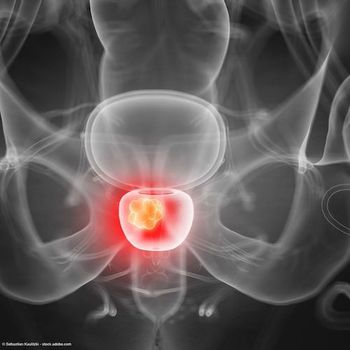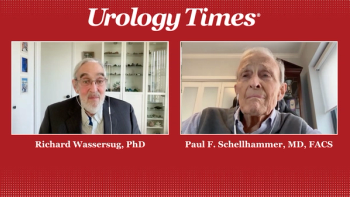
Study: Low-dose-rate BT outperforms EBRT boost
An iodine-125 low-dose-rate brachytherapy boost outperformed dose-escalated external beam radiotherapy boost in achieving biochemical progression-free survival in men with unfavorable risk prostate cancer, according to results of a recent multicenter trial.
Orlando, FL-An iodine-125 low-dose-rate brachytherapy (LDR-B) boost outperformed dose-escalated external beam radiotherapy boost (EBRT-B) in achieving biochemical progression-free survival (PFS) in men with unfavorable risk
“EBRT-B reduces the relapse rate by 50% at 9 years. Brachytherapy is best,” stated co-author Scott Tyldesley, MD, clinical associate professor of radiation oncology at the University of British Columbia, Vancouver, Canada, who presented the study at the Genitourinary Cancers Symposium in Orlando, FL on behalf of principal investigator W. James Morris, MD.
The ASCENDE-RT (Androgen Suppression Combined with Elective Nodal and Dose Escalation Radiation Therapy) trial was conducted at 39 centers and randomized 398 men with high-risk and intermediate-risk prostate cancer. All men received 12 months of androgen deprivation therapy (ADT) with 8 months of neoadjuvant therapy followed by external beam pelvic radiation and then either LDR-B or EBRT-B (which was randomized prior to starting ADT). The primary endpoint was biochemical PFS and secondary endpoints included overall survival and metastasis-free survival. Patients were stratified according to high risk (two-thirds) and intermediate risk (one-third).
At baseline, the two arms were well balanced for age and main prognostic factors. About two-thirds of patients had more than 50% of cores that had cancer.
At a median follow-up of 6.5 years, randomization to the LDR-B arm reduced the rate of relapse by 50%.
Relapse-free survival favors LDR arm
There were 29 protocol violations evenly split between the two treatment arms. Intent-to-treat analysis showed that the 5-, 7-, and 9-year rates of relapse-free survival (RFS) favored the LDR arm as follows:
- 5-year RFS: 83% versus 89%, respectively
- 7-year RFS: 71% versus 86%, respectively
- 9-year RFS: 63% versus 83%, respectively.
Late toxicities occurred, but significant toxicities had mostly resolved by last follow-up. The rate of late genitourinary toxicity was increased by 5% to 6% in the LDR-B arm. There was no difference in late gastrointestinal toxicity.
Formal discussant Andrew Loblaw, MD, a radiation oncologist at the Odette Cancer Institute, Sunnybrook Health Sciences Center, Toronto, said all trials of brachytherapy-albeit with different techniques-show that brachytherapy boost should be the standard of care for unfavorable-risk prostate cancer.
Dr. Tyldesley has received honoraria from Bayer and serves as a consultant/adviser to Amgen, AstraZeneca, Ferring Pharmaceuticals, and Janssen-Ortho. Several of his co-authors have received honoraria and/or are consultants/advisers to pharmaceutical companies.
You might also like:
Newsletter
Stay current with the latest urology news and practice-changing insights — sign up now for the essential updates every urologist needs.




















